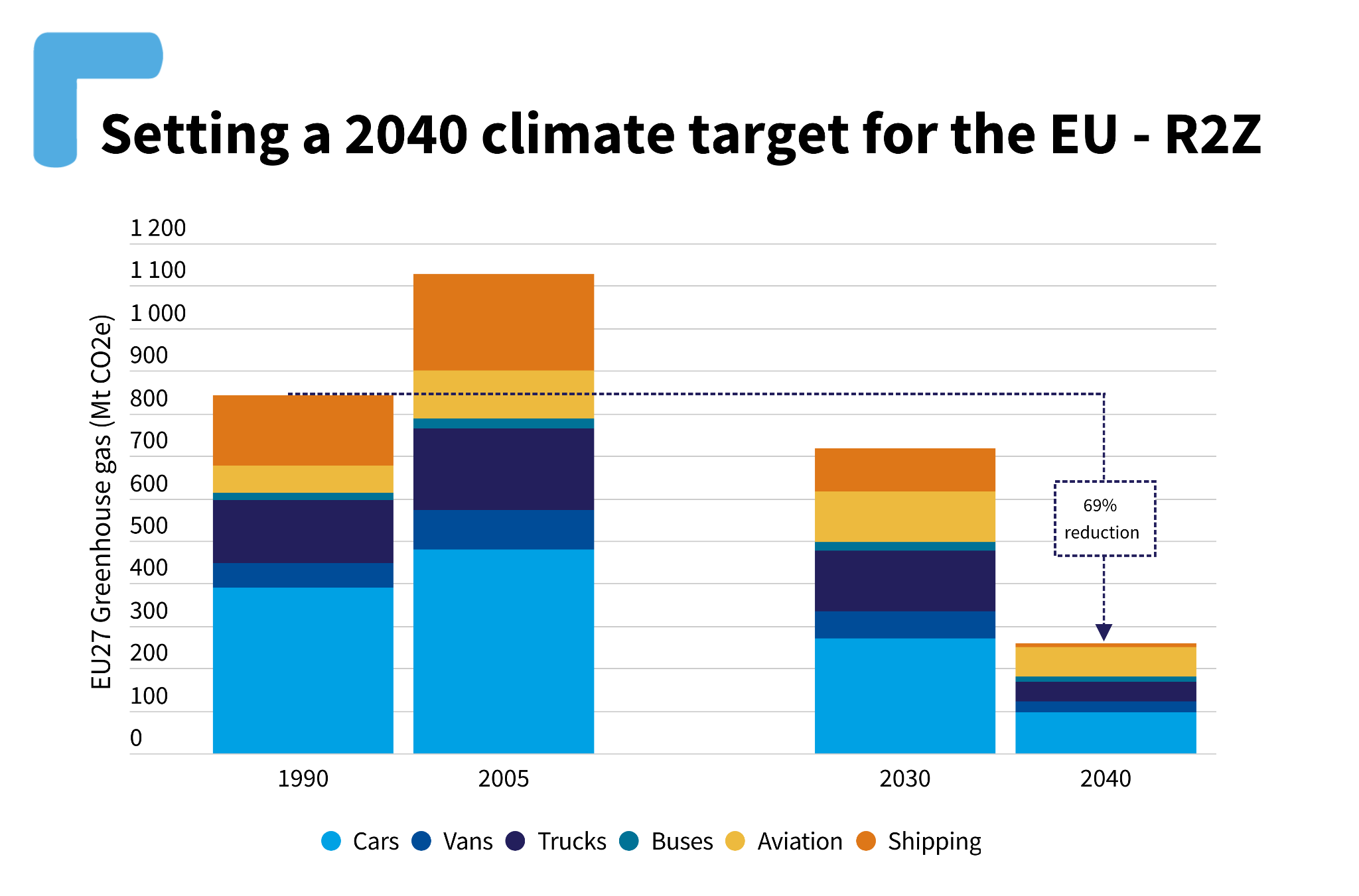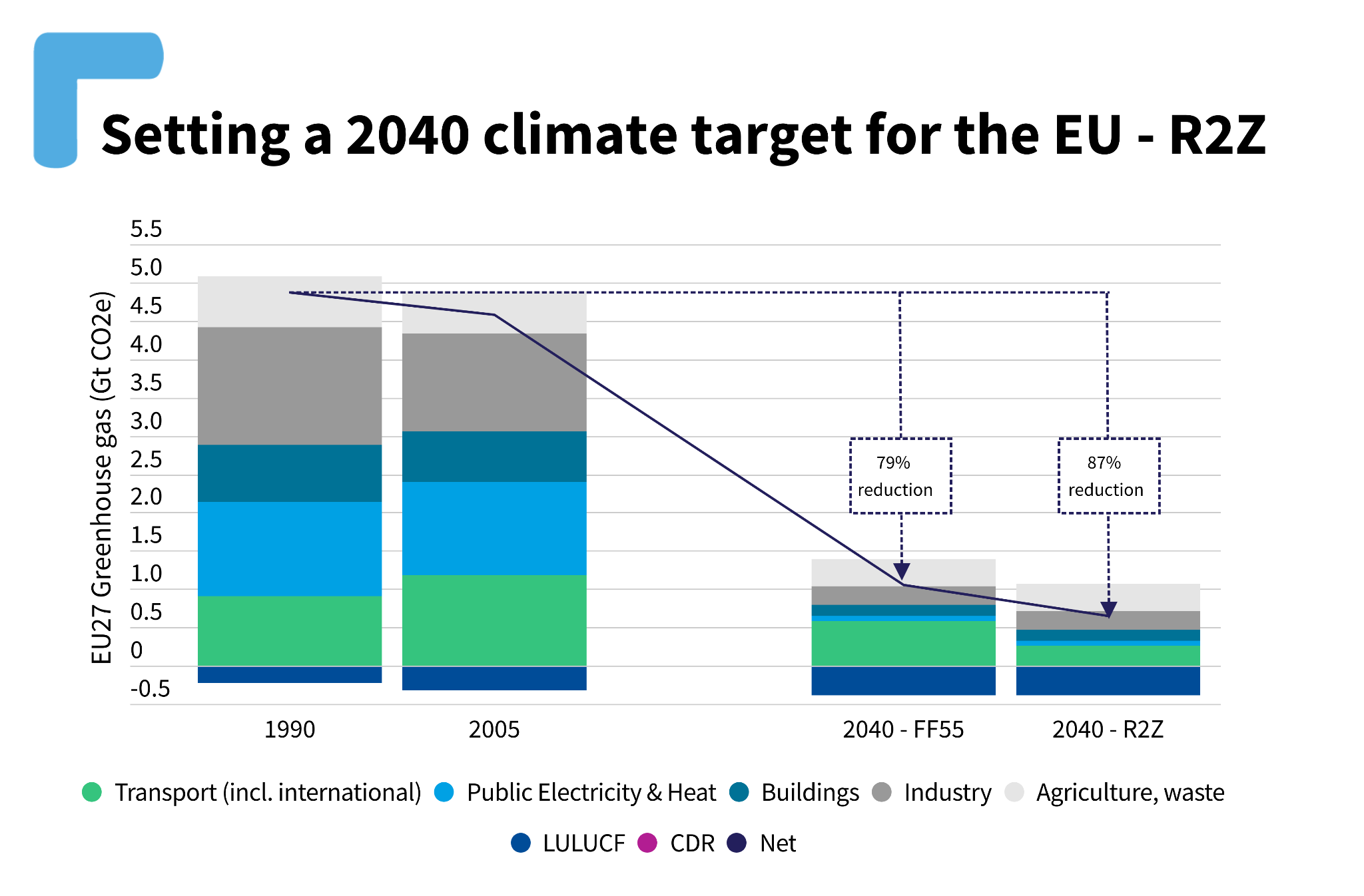As a signatory to the Paris Agreement, the European Union committed to limit global warming well below 2°C above pre-industrial levels. In order to fulfil this commitment, the Union adopted the European Green Deal (EGD) and made the objective to become climate neutral by mid-century legally binding by enshrining it into the European Climate Law. The recently adopted Ff55 package aims to deliver 55% of emission reductions in 2030 compared to 1990 levels as an intermediate target. According to the Climate Law, in 2024 the European Commission must propose the next climate milestones: an EU emission reduction target for 2040 and indicate a GHG emissions budget for 2030-2050.
The EGD and the Ff55 set the path for the deep transformation EU economies must undergo in order to become genuinely sustainable and remain competitive. An ambitious EU target for 2040 is fundamental to accelerate and deepen the process started with the EGD and provide long term planning and investment certainty for people and business.
This document represents T&E’s submission to the call for evidence and the questionnaire which make part of the public consultation launched by the European Commission on the definition of the EU 2040 climate target.
Concerning the approach to take on target setting, T&E suggests future emission reduction targets in the EU should:
- be set every 5-years
- be kept separate from carbon removals targets
- include non-CO2 greenhouse gas emissions, in particular aviation contrails
- include all emissions with the absolute minimum of exceptions
- include system efficiency targets for transport
- keep a global carbon budget as guiding action
Concerning the emissions scenarios for 2040, T&E modelling shows the FF55 policies for transport would deliver a 30% reduction in 2040 compared to the 1990 baseline. We find that FF55 will halve road transport emissions compared to 1990. However aviation and shipping emissions will increase by 13% over the same period, decreasing by about a quarter from 2005.
T&E’s Road to Zero scenarios show that the transport sector can cut its emissions by around 70% by 2040 compared to the 1990 baseline. Aside from the regulations, which mainly focus on accelerating electrification of road vehicles, and Refuel and FEUM for aviation and ships, we include transport system efficiency measures.

To see where our transportation scenarios would get us in terms of economy-wide reduction, we took the 1.5TECH and 1.5LIFE scenarios for non-transport sectors of the European Commission’s Clean Planet for All. We then compared the results, including 51 MtCO2 of carbon dioxide removals from the 1.5TECH scenario. We see that our scenario gets us to almost a 90% reduction compared to 1990, while FF55 reduces emissions by 79%. Based on other studies that have had deep dives into other sectors and are more up to date than Clean Planet for All, we assume that more rapid emission reductions are possible in other sectors. This leads us to recommend that a 90% reduction target is possible.

To see where our transportation scenarios would get us in terms of economy-wide reduction, we took the 1.5TECH and 1.5LIFE scenarios for non-transport sectors of the European Commission’s Clean Planet for All. We then compared the results, including 51 MtCO2 of carbon dioxide removals from the 1.5TECH scenario. We see that our scenario gets us to almost a 90% reduction compared to 1990, while FF55 reduces emissions by 79%. Based on other studies that have had deep dives into other sectors and are more up to date than Clean Planet for All, we assume that more rapid emission reductions are possible in other sectors. This leads us to recommend that a 90% reduction target is possible.


